Corner sinks for the kitchen: varieties and choices

The standard layout of an apartment building hardly implies the presence of a corner sink, but most modern owners have long realized for themselves that the standard is often the worst that can be. The unusual shape and location of the sink in practice usually turn out to be not only more aesthetically attractive, but also provide the owners with additional convenience, allowing them to arrange furniture and appliances more practical.
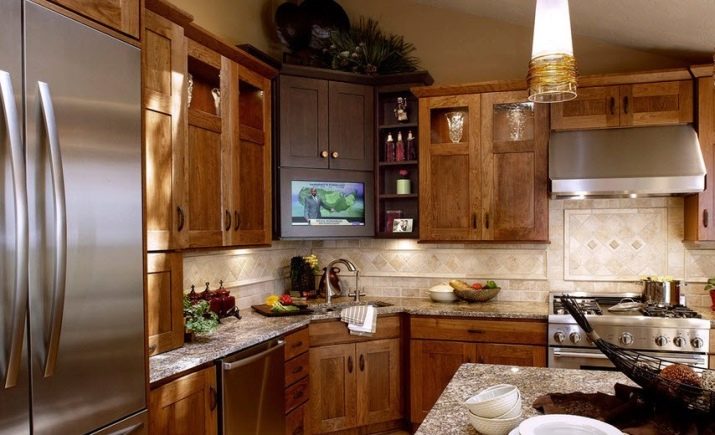
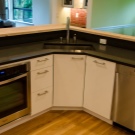
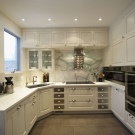


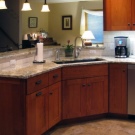
At the same time, many in their lives have only heard about corner sinks, which means that it is worth figuring out what it is and how to deal with them.
Features, pros and cons
To begin with, it is worth clarifying what constitutes a corner sink for the kitchen. In terms of functionality, this is an ordinary sink for washing dishes and other household needs, which radically differs from most sinks in shape - from above it looks like a triangle that fits perfectly into the corner.
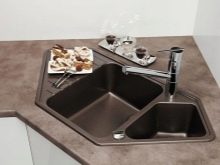
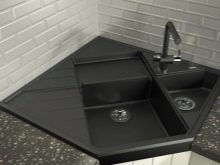
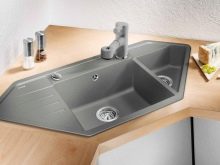
A corner sink is usually installed in a kitchen, where the layout of the work area resembles the letter "L", because this is practically the only way to effectively use the space squeezed in the corner.
Considering the advantages of such a layout, the following potential advantages should be highlighted.
- Effective use of space. A problem in any room is filling the corner efficiently, because it can be difficult to find the right size of furniture. In the kitchen, this is especially true, because many pieces of furniture and pieces of equipment should be placed on a relatively small square.A corner sink is able to take up a few decimeters left along the wall with the main part of the headset, and smoothly "flow" to the adjacent wall. Without it, you would most likely just leave the corner blank and select another area under the sink.

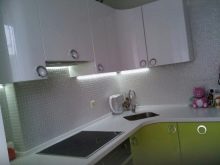

- Ease of access. Corner kitchens are in demand because they provide the proper level of comfort. You don't have to step to the side to reach other parts of the headset - just reach out to interact with adjacent areas of the work area. You can place a refrigerator, stove or worktop nearby - whatever you think is more necessary.

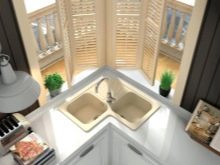

- Spacious drawers. Due to the triangular shape, the corner sink can take up even more space than its “ordinary counterpart” would, but this has its advantages. There is usually a usable space directly under the sink, where most owners store their trash. In recent years, the sorting of waste has become an increasingly relevant trend, which makes it possible to recycle it more efficiently, and if you consider yourself one of the conscientious citizens, then the possibility of installing several garbage bins at once will not hurt you.
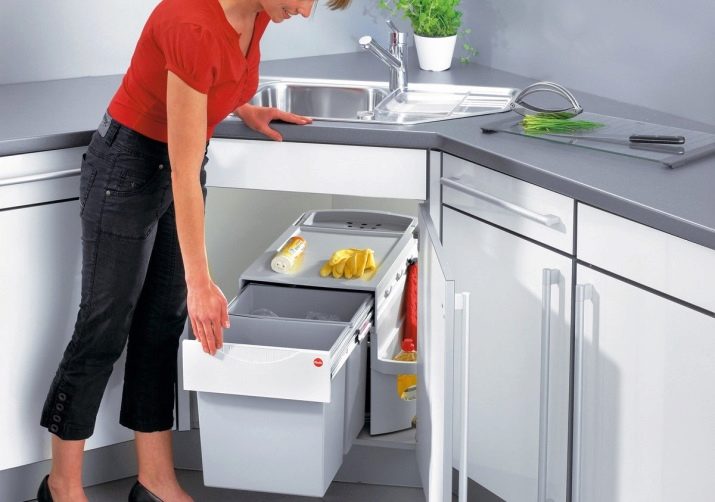
- Easy to fit into the interior. Although for most consumers such a design solution is still a wonder, manufacturers have long grasped the trend of popularizing such atypical solutions, so they have released a variety of models that can fit into any popular design style. This means that such a sink does not limit the flight of your imagination.
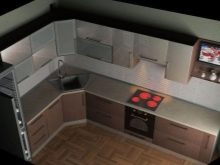


- Presentability and originality. Instead of coming up with a way to shove a classic rectangular sink into a cramped corner, it's better to choose a corner model - this is the way out that logic itself dictates. The product will look appropriate in its place, and due to its originality, it will claim to be one of the "highlights" of the interior.


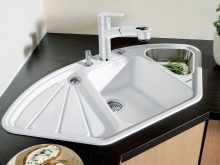
Of course, certain disadvantages of such a layout are also present, therefore, when choosing a specific model, you should think about how it will fit into the overall concept of the kitchen. For example, sinks that are too large (both the sinks themselves and the cabinets under them) are usually inappropriate, because the large frame makes access to the corner difficult, which means it will be problematic to put things in order there.
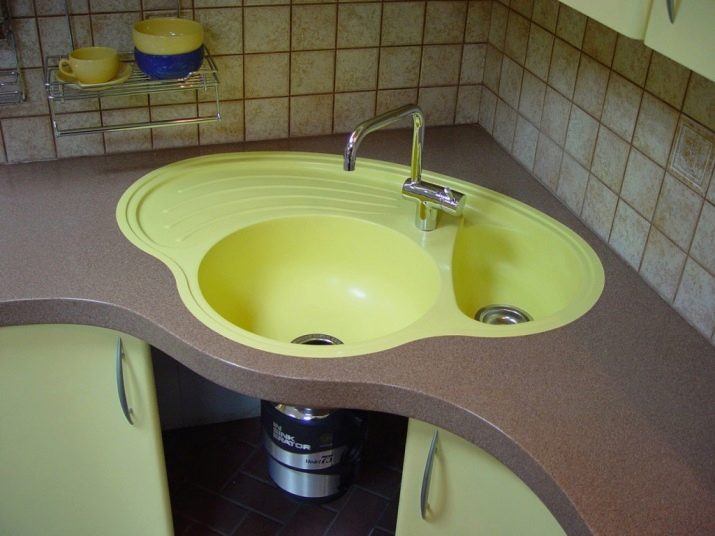
In addition, there is quite a lot of space inside the cabinet with a bowl, but its doors are usually quite cramped, and in the event of any breakdowns, this can be a problem for the plumber called to troubleshoot.
Manufacturing materials
When deciding on the choice of a specific corner sink, you need to focus not only on the appearance and cost, but also on the material of manufacture - in harsh kitchen conditions, it is this factor that often determines how durable the structure will be. It is not for nothing that there are different options in terms of material - each of them has its own pros and cons.
- Stainless steel is probably the most obvious choice. Metal products are popular in many ways due to their low cost, but they also have other advantages - for example, a simple and versatile design that goes well with any stylistic direction. In addition, the stainless steel received this name due to its ability to effectively resist corrosion, and the bowl is also available in matte and glossy versions.
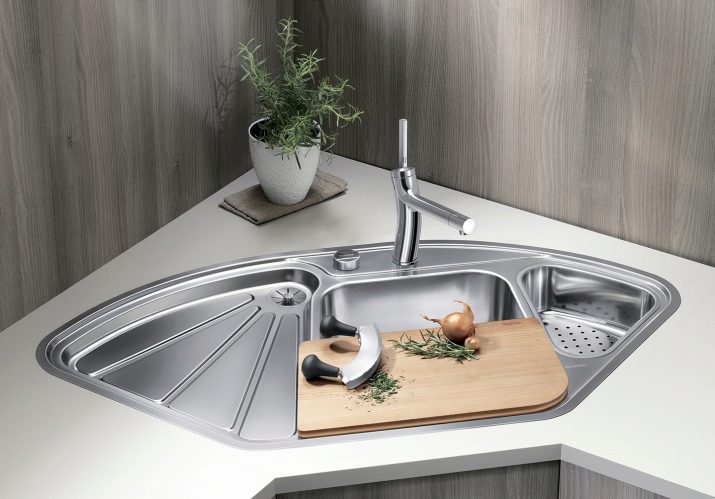
You can even mount the product yourself, which is also a plus, but the only drawback is the noise - the sound of pouring water will be heard throughout the apartment.
- Ceramic corner sinks are good for their presentability - they look beautiful and neat, while you should not perceive them as purely white products, because now they are also produced in color.However, such products are valued not so much for their external characteristics as for their stability - neither moisture nor chemical agents can do anything with this material. Unfortunately, there were some drawbacks here too: the sink weighs quite a lot, which creates difficulties during delivery and installation, and the material is also prone to the formation of ugly chips after impacts.

- Artificial and natural stone as a material for making a sink Is a choice for those who do not even think about saving. Of course, a stone sink will cost more if natural raw materials were used in its manufacture, but even imitation will cost a tidy sum, while a real granite bowl is considered to be of better quality and more durable.
The product, in any case, looks very stylish, has increased durability, is not afraid of moisture, or chemistry, or even high temperature, and is also able to muffle the sound of water flowing into the bowl. At the same time, the design has even more impressive weight than the ceramic counterpart, and the cost has already been mentioned.
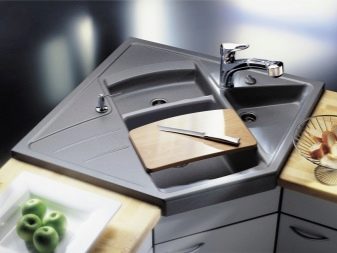
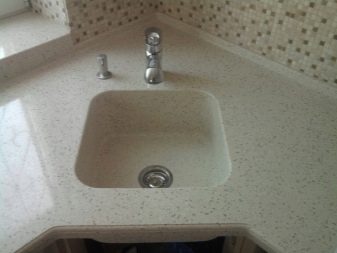
Sizes and shapes
Contrary to popular belief, a corner sink does not have to be triangular at all - such a requirement is put forward, rather, to its cabinet, while the bowl itself can have absolutely any geometry. Moreover, proper triangular shells are rare, since the space in sharp corners can hardly be used effectively. By shape, sinks are usually divided into three main types, although individual designers can go far beyond the standard.
- A round sink by its very shape demonstrates its readiness to fit into any style - it does not contradict anything and looks harmonious. Having no corners, such a bowl is quite compact, and experts usually advise installing just such plumbing in small and cramped kitchens of apartment buildings. The same lack of corners has a positive effect on the hygiene of the product - there is simply nowhere for germs and dirt to accumulate, since the structure has no hard-to-reach places.
Usually, the round version is sold immediately in the headset, which is very convenient.
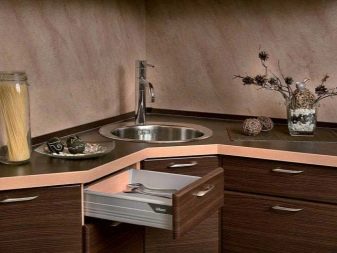
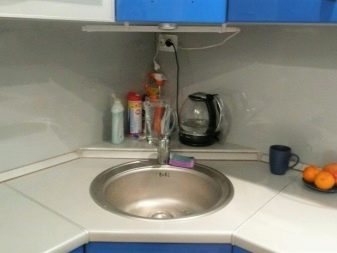
- Square shape considered classic for kitchen sinks, it is almost as appropriate as a round one, and most importantly - it allows you to place larger angular objects that simply would not be included in a rounded product of a similar diameter. Due to the fact that such a structure does not have elongated sides, it is also considered economical in terms of efficient use of space.
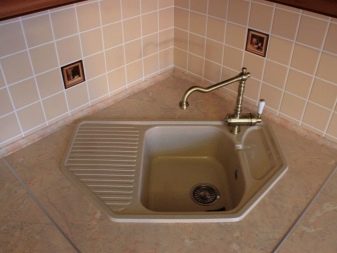
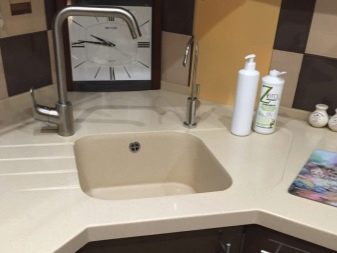
Square sinks are often equipped with an additional wing for laying out dishes, but this element still cannot be called a must.
- Rectangular models today are considered the most popular because they are easier to fit into a tight corner.
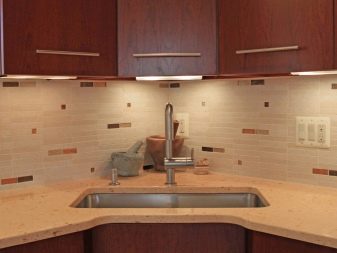
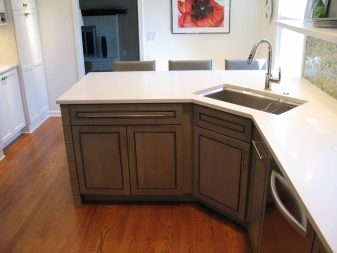
Separately, it should be noted that sinks with 2 bowls have become increasingly popular recently. The owners of these newfangled models note that it is practical if you have a lot of really dirty work - for example, you often clean fish, wash the grill, and so on. In this case, one sink is allocated for the dirtiest tasks, while the second is fundamentally cleaner, it is never stained with grease and the like.
At the same time, a significant part of consumers say that they chose the original model in vain - they do not see much convenience in it, but it predictably takes up more space.
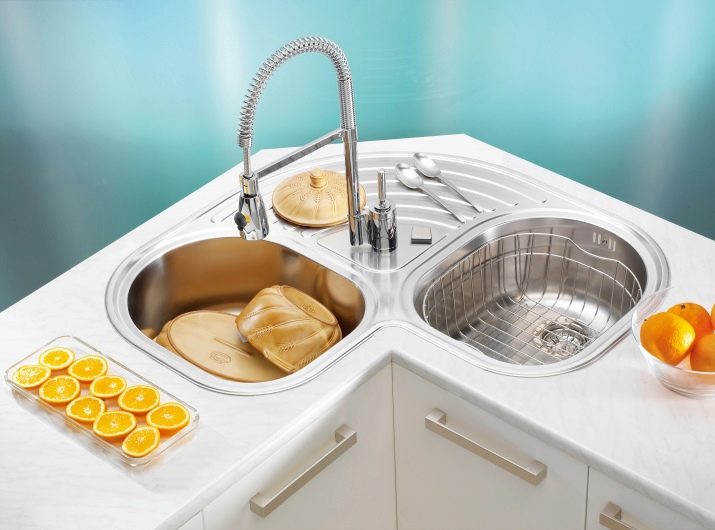
A separate topic is the choice of the size of the sink. First of all, you will have to build on what your kitchen allows, so first you need to measure how much free space you can allocate under the sink. Keep in mind that the sink cannot take up absolutely all the space, so you need to leave a small margin of a couple of centimeters so that the same headset fits into place.

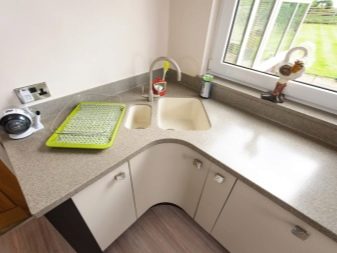
In general, this rule is relevant even for those cases when the product is sold already built into the frame.
The sink is a three-dimensional structure, all of its parameters matter. So, even with a constant abundance of dirty dishes, you can get by with a bowl that is relatively small in length and width, if the depth allows you to load everything you need. If you do not use a sink for washing dishes, because you have thoughtfully acquired a dishwasher, you can neglect the size of the sink, preferring a small one, but in the opposite case, you should compare the size of the future bowl with the typical dimensions of your dishes.
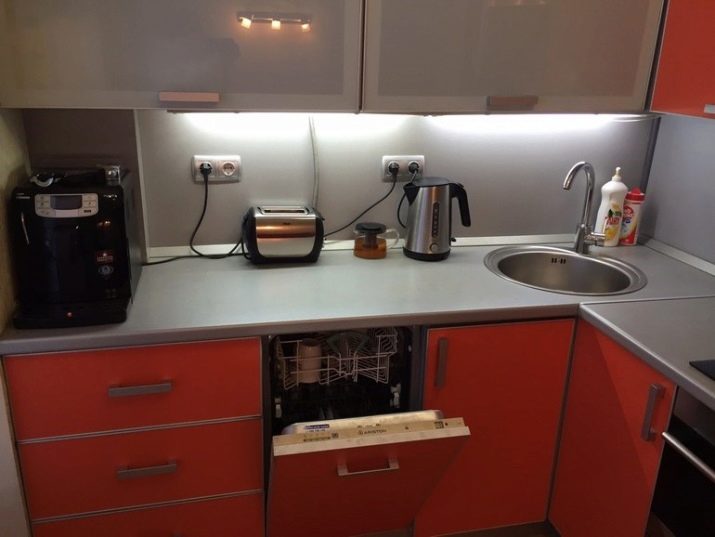
If there are usually no problems with the choice of the length and width of the bowl, then the rules for selection by depth are a mystery for many. Experts say that the optimal solution is a depth in the range of 16-20 cm, since with such indicators, the water falling from the tap will not spray outside the sink.
Here you need to understand that then you should also take into account the removal of the tap from the bottom of the sink - if it is located high, then the depth inadvertently increases, and the spray will fly further. At the same time, if the sink is mounted high enough and located at a level higher than 85 cm, sink depth more than 20 cm is contraindicated - a person of average height will find it uncomfortable to constantly bend so low as to reach the bottom with his hands.
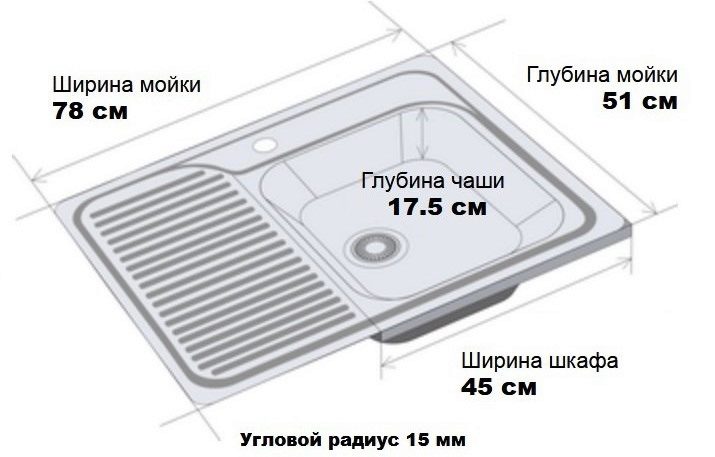
At the same time, a depth of 20 cm and more is relevant if you regularly wash not only plates, but also large pots or pans.
Installation methods
Installation of sinks nowadays is carried out in one of two ways, depending on which class your model belongs to - cut-in or overhead sinks.
Overhead sinks are the simplest in terms of installation. - along the edges they are equipped with special bumpers, which are designed to support the structure above the hole in the headset, which usually turns out to be relatively small. This combination is easy to disassemble and reassemble, since the sink is not attached to the furniture in any way - it is pressed against it only by its own weight under the influence of gravity.
It is these models of sinks that are usually equipped with side "wings" for dishes, most often they are made of light stainless steel so as not to overload the frame.
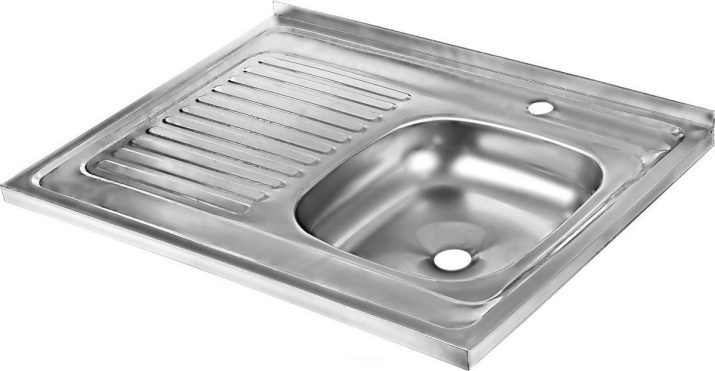
Recessed models built directly into the tabletop represent a more complex structure, which is not so easy to divide into its components. This method is not only preferable, but necessary if you have purchased a sink made of heavy ceramics or even heavier stone. The inset of the bowl provides a variety of design options, since the sink itself can be raised or sunk in the countertop at the request of the owner.
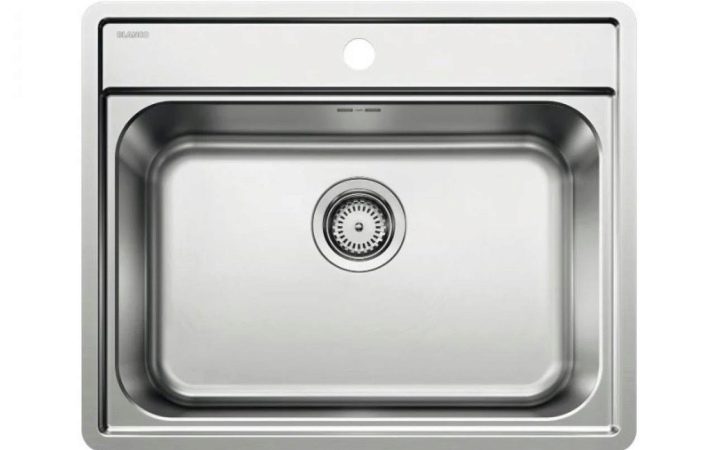
Such an integral design is distinguished by increased aesthetics, but independent installation in most cases is impossible or extremely complicated.
Color solutions
The choice of sink color for many owners seems to be secondary, but not if you have clearly thought about what style of decoration your kitchen needs, and are afraid that the sink may not fit.
Actually, if you made a choice in favor of stainless steel, then the color of the product is most likely predetermined - it will be metallic gray. In this case, you can choose only the shade, as well as whether the grayness will be matte or glossy. Preference is often given to glossy surfaces, from which it is easier to remove various dirt, but at the same time the slightest scratch for gloss is a death sentence, while a matte surface is able to survive a similar tragedy.
Contrary to fears, a standard “steel” color sink usually looks good in any design direction, since gray refers to achromatic colors and can be combined with all other tones. In the same time the most organic product will look in the high-tech style - there its shade will completely merge with the environment.

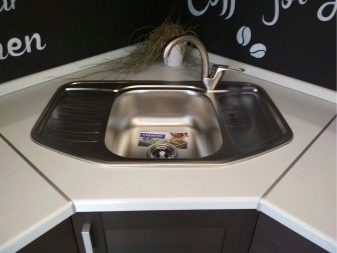
The gray and black colors are generally typical for stone models, but here the shine will be somewhat different, therefore certain requirements are put forward for the interior. So, the use of natural raw materials (or even high-quality imitation) suggests that the entire design of the room as a whole is aimed at using natural materials.
For this reason, typical stone tones, which can usually be considered achromatic, are often combined with brown wood finishes and bright textile additions, imitating classic chic or accentuated rustic coziness.
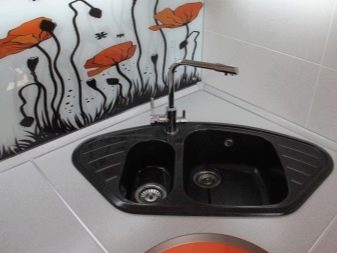

As far as ceramic sinks are concerned, they come in a wide range of shades available, which is good news for anyone who wants even a sink bowl to resonate with other furnishings. As a rule, such products have a somewhat muted tone, without excessively bright shades, but even in this design, the plumbing will not seem like a completely foreign body.
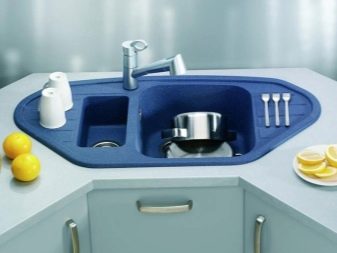
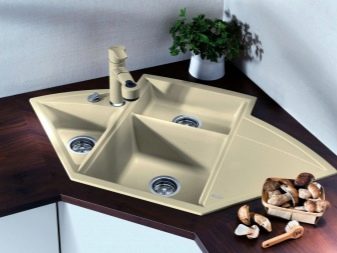
When deciding on the choice of the color of the sink, you should give preference to the model that fits into the overall color scheme of the room and will overlap with something or become an organic part of the headset of the same color.
How to choose?
To make the chosen sink as practical and convenient as possible, pay attention to additional factors that distinguish the model that is suitable in color and size from all others.
For example, the presence of side "wings" on which you can conveniently lay out dishes that have already been washed or are waiting for their turn, are perceived by most housewives, rather, as an advantage, and you should deny yourself such a component only if the model simply does not fit into the dedicated for her, a corner or you will have to trim the area of the cutting tabletop.

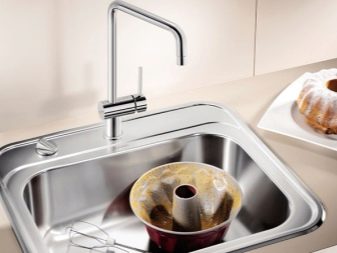
The complete set of the sink directly affects its cost., but when choosing in favor of an objectively better model, you will not think about replacing for a long time, so sometimes it makes sense to overpay once. For example, In recent years, it has become popular to equip a sink with a waste grinder - this is very practical if you often work with cutting vegetables and fish and are afraid that small, but at the same time, not too small pieces will fall into the pipe and cause it to clog.
In addition, manufacturers have finally responded to the massive trend of installing additional taps for drinking water, where the liquid enters separately, after passing through a filter - some sinks are already specially designed for the presence of an extra spout.
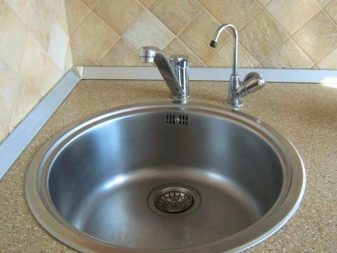

Some of the leading companies have gone even further - they produce sinks complete with cutting boards. This option is definitely worth exploring, because the purchase of a set is always cheaper than buying two components separately, and the sets are also advantageous in that they look aesthetically whole and make the owners less worried about the uniformity of the interior being created.
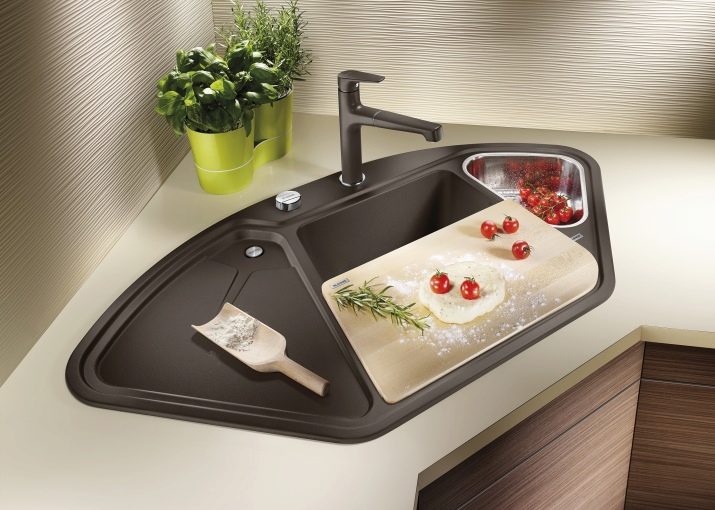
If you want your sink to be more than just practical and beautiful, but also a delight, think about installing an LED strip in the cabinet. Recently, such a design move has gained unprecedented popularity, because it is able to revive even the most bland kitchen, but at the same time you need to carefully monitor compliance with waterproofing, because contact of electrical wiring with water is fraught with serious negative consequences.
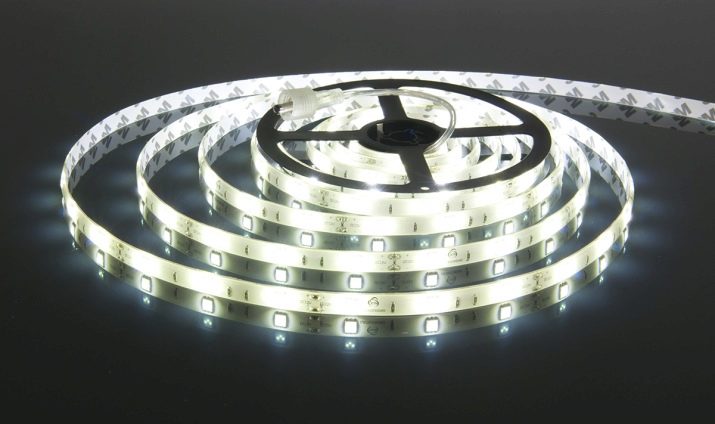
Having decided on the model you like, you should check with the seller that all the necessary documents and certificates are available, which prove that no harmful materials were used in the manufacturing process, and also give you the right to warranty service.

In response to such questions, sellers on the market often just shrug their shoulders, therefore experts always try to purchase plumbing only in specialized stores, so as not to risk quality.
Finally, study in detail exactly the copy that you plan to buy - there should be no chips, cracks or dents on it. Do not listen to the arguments of the seller who insists that this is the inside of the bowl and the outside of the damage will not be noticeable - this is already damage to the integrity, a potential weak point of the product, which means that its durability raises serious doubts. If you purchase a sink right away with a headset, do your due diligence on it as well.
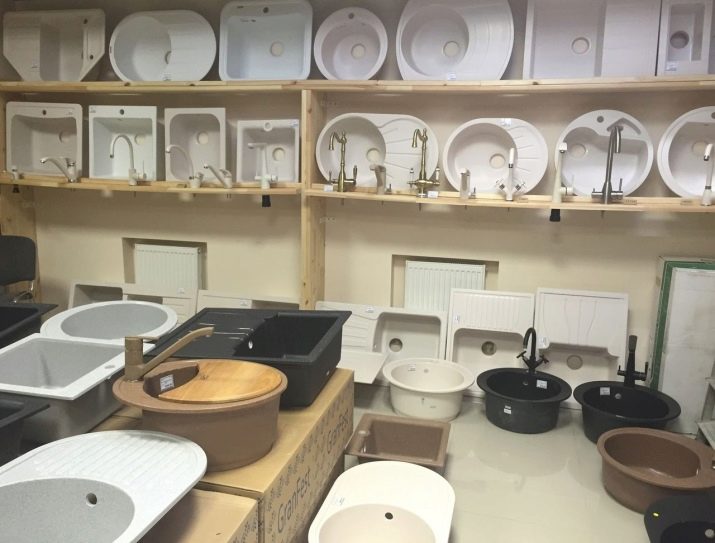
Location options
For the bulk of consumers, the installation of a corner sink is possible only in the corner, but in fact it can be installed in some other places. In practice, the angular arrangement of such a product is not always justified if the owners are short (due to the potential occurrence in the corner of a "dead zone" that cannot be reached in any way) or often cook together (they cannot use the same sink together at the same time).
The original version of the location of the corner sink is on the island, which is located in the middle of the room, completely separate from the main headset and the working area. If the length and width of such a functional island allows you to mount furniture and appliances in two rows, it makes sense to put a corner sink on the corner - now, on the contrary, convenient access to it will be open to it from both sides at once, which simplifies cooking for one person and helps to work productively two at once.
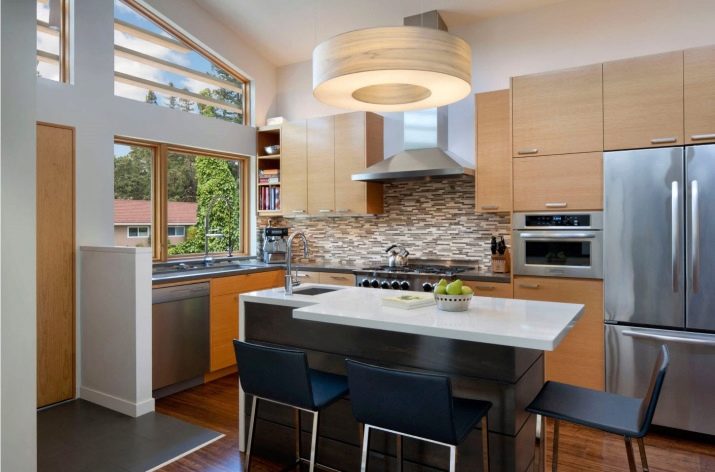
In addition, this is a very interesting option for decorating the kitchen interior also from an aesthetic point of view.
In a multi-storey building, you are unlikely to have such an opportunity, but in a private house you can implement the layout scheme, which has recently become very popular in Europe. The corner sink, as it should be, is located in the corner, but not in a remote corner, as might be expected, but where windows adjoin it on both sides.
For our region, this is simply fresh and original, which is what the owners are trying to achieve in most cases, but it is also very useful for convenience, because the abundance of natural light allows you to more effectively wash food and dishes from dirt.

For the corner joint of the sink in the kitchen, see the video below.








